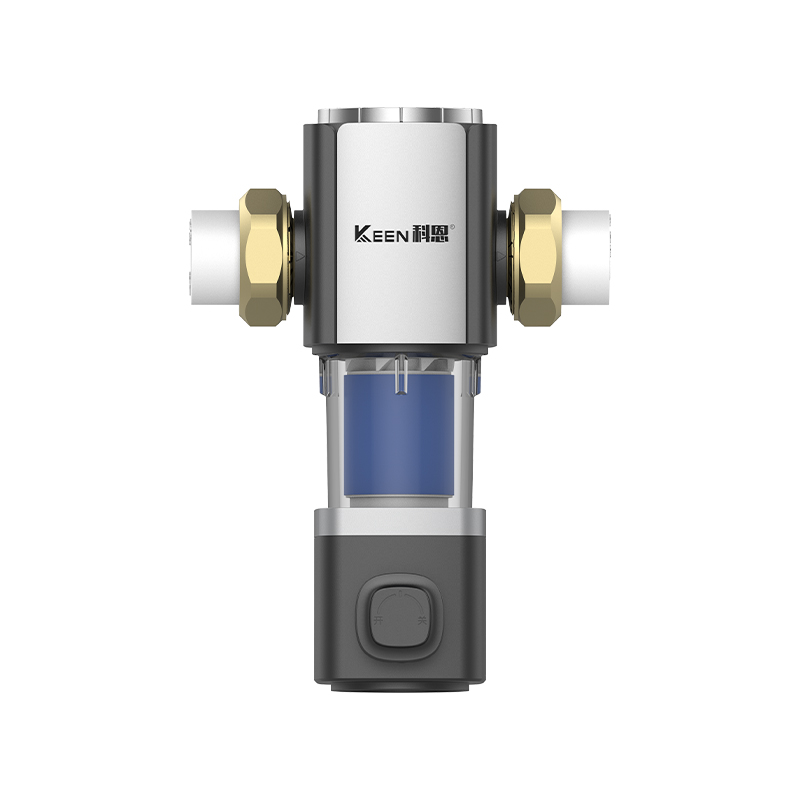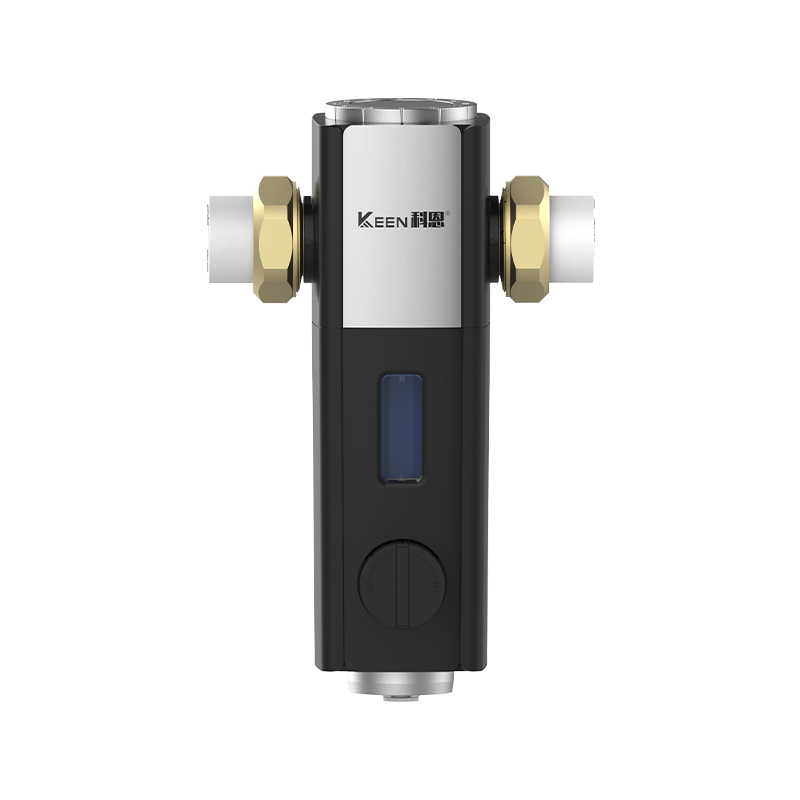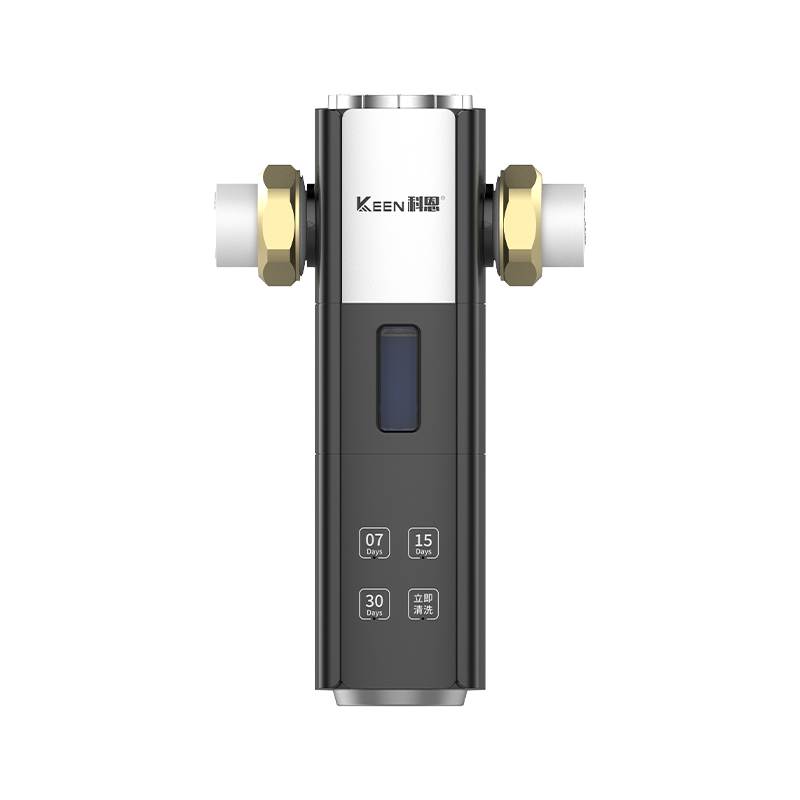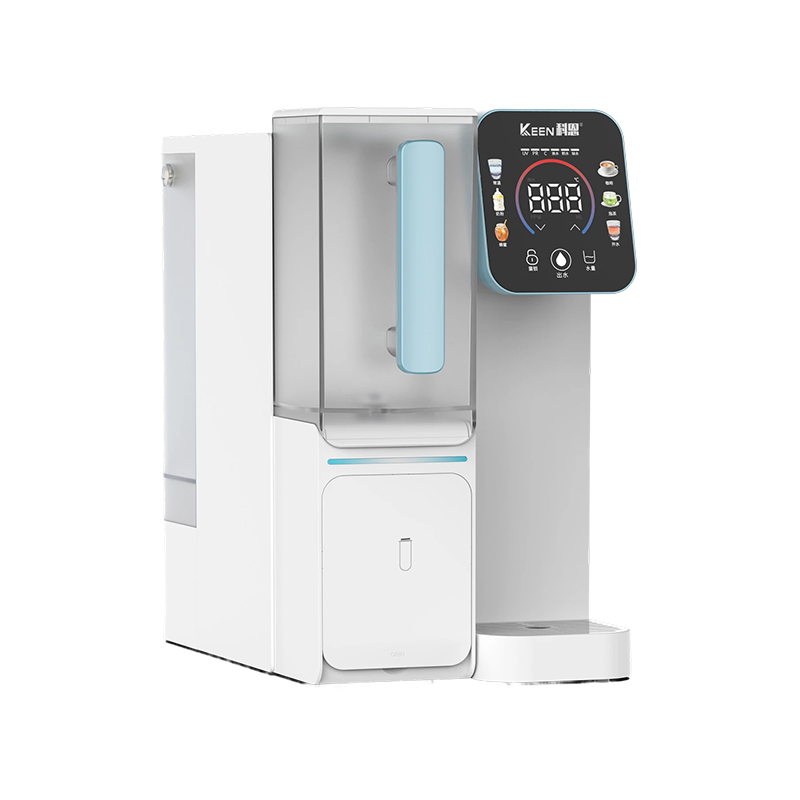How effective is the under kitchen water purifier in removing scale?
Release Time : 2025-10-23
The effectiveness of an under-kitchen water purifier in removing scale depends crucially on its filtration technology and filter configuration. Scale is essentially the precipitation of calcium carbonate and magnesium carbonate formed by heating or evaporation of calcium and magnesium ions in water. The harder the water, the more pronounced scale formation. Therefore, the ability to effectively intercept or replace these ions becomes a key indicator of a water purifier's scale removal capabilities.
Among the many types of under-kitchen water purifiers, reverse osmosis water purifiers and water softeners are two mainstream solutions for addressing scale. Reverse osmosis water purifiers utilize a 0.0001 micron pore size RO membrane to achieve a physical "hard core interception"—allowing only water molecules to pass through while impurities such as calcium and magnesium ions, heavy metals, and bacteria are trapped. The filtered water is near-pure water standards and can be consumed directly. This technology not only completely eliminates the foundations of scale formation but also simultaneously removes harmful substances such as residual chlorine and pesticide residues, making it a preferred solution for direct drinking water in home kitchens.
Water softeners use the chemical exchange principle of ion exchange resins, replacing calcium and magnesium ions in the water with sodium ions in the resin, thereby reducing water hardness. Unlike reverse osmosis water purifiers, treated water retains minerals, but its ability to form scale is significantly reduced, making it more suitable for domestic use. For example, washing clothes with softened water can reduce fiber hardening, resulting in smoother skin during bathing. Reduced scale also extends the lifespan of water-related equipment such as water heaters and showerheads. However, water treated by a water softener is not recommended for direct drinking and must be used in conjunction with other water purification equipment.
Although ultrafiltration membrane water purifiers can filter impurities as fine as 0.01 microns, effectively trapping bacteria, rust, and colloids, they are unable to remove dissolved calcium and magnesium ions in the water and therefore cannot address the root cause of scale. These water purifiers are more suitable for areas with softer water or those less sensitive to scale, as auxiliary equipment to improve water taste and remove odors. If the water hardness in your area is high, relying solely on an ultrafiltration membrane water purifier may still lead to problems like kettle scaling and showerhead clogs after long-term use.
Different filter element configurations directly impact the descaling effectiveness of a water purifier. For example, in a five-stage filtration system, the PP cotton filter element intercepts large particles like silt, sand, and rust, the activated carbon filter element absorbs residual chlorine and odors, the RO membrane core element intercepts calcium and magnesium ions, and post-activated carbon further improves taste. This multi-stage, coordinated filtration structure not only removes impurities of varying particle sizes in layers, but also ensures thorough descaling through the precise interception of the RO membrane. In contrast, three- or four-stage filtration systems may have insufficient filter elements, allowing some calcium and magnesium ions to penetrate, affecting descaling efficiency.
Different usage scenarios and needs also determine the descaling performance of the under-kitchen water purifier. If a household's primary need is direct drinking water and the water hardness in their area is high, a reverse osmosis water purifier is the optimal solution. If the focus is on improving domestic water quality, such as for laundry, bathing, and equipment maintenance, a water softener can specifically address scale issues. If you are less sensitive to scale or have a limited budget, an ultrafiltration membrane water purifier can be a basic filtration solution, but regular scale removal is required.
The effectiveness of an under-kitchen water purifier in removing scale is essentially a matter of matching its technical principles with the intended use. Reverse osmosis water purifiers achieve "zero scale" for direct drinking through physical interception, while water softeners optimize the domestic water experience through chemical replacement. Ultrafiltration membrane water purifiers require careful consideration of water quality. When purchasing, consumers should first test the local water hardness, clarify the intended use scenario, and then select a suitable product based on the filter cartridge configuration and technical principles. This will truly resolve scale issues and improve household water quality.







